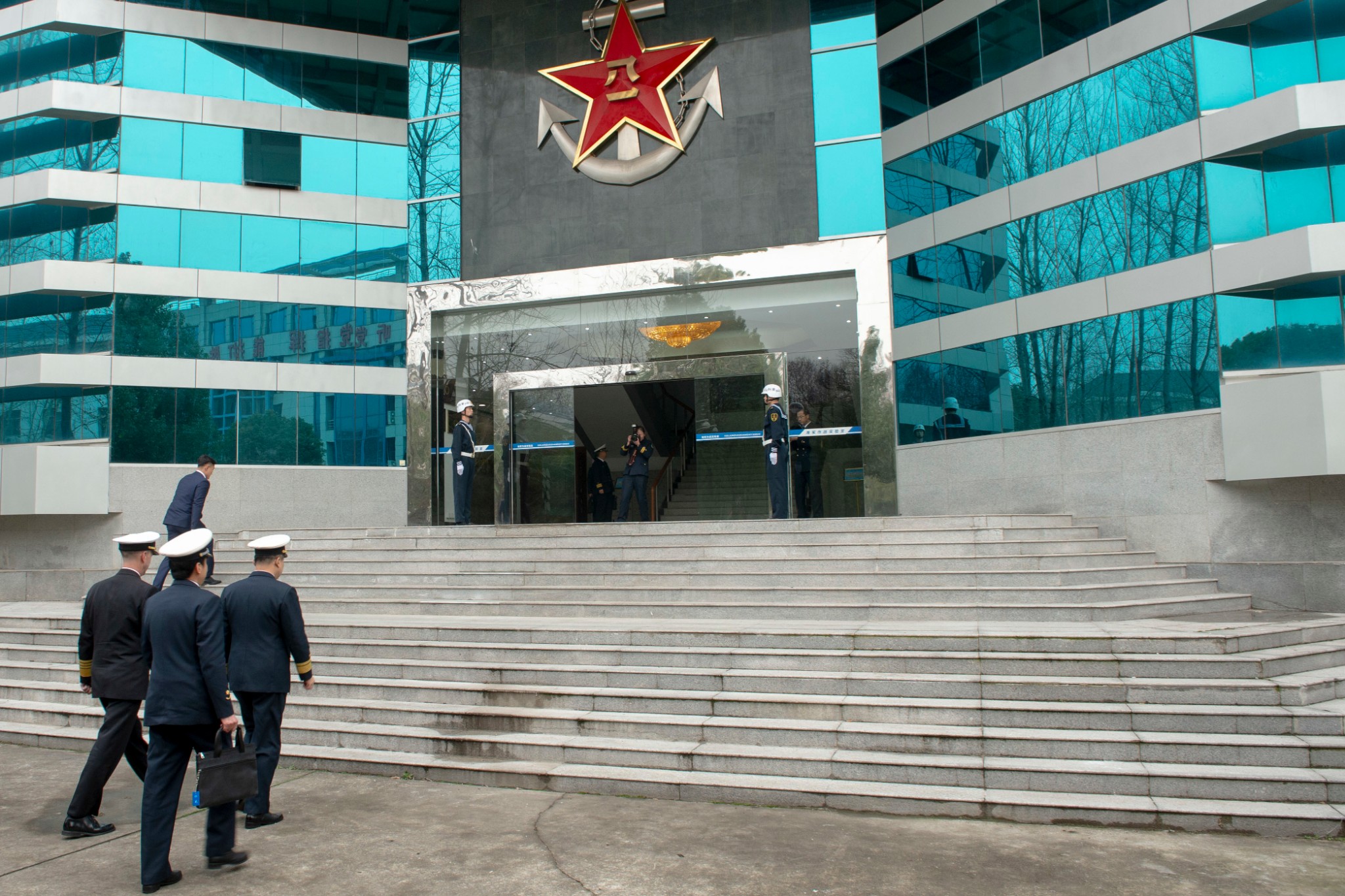 PLA Naval Command College in Nanjing, China (Courtesy of DoD)
PLA Naval Command College in Nanjing, China (Courtesy of DoD)
For the Chinese Nuclear Program, Less is More
Chinese cyber-attacks, increasing economic tension, and activity in the South China Sea frequently make headlines. Given the multitude of Chinese threats, it can seem as though nuclear weapons – what used to be the primary threat to national security – have taken a backseat. Recently, however, Senator Tom Cotton (R-AK) asked the commander of the U.S. Indo-Pacific Command, Adm. Philip Davidson, about the possibility of China building a nuclear arsenal greater than that of the United States in the coming decade. His answer pointed out that China would need to “…quadruple their stockpile…” in order for that happen, which understated the disparity between the Chinese and American arsenals. China possesses a full nuclear triad—intercontinental ballistic missiles (ICBM’s), heavy bombers, and submarine-launched ballistic missiles—but only has an estimated 320 nuclear warheads at its disposal, making it 16 times smaller than the total nuclear arsenal of the U.S. China has possessed advanced nuclear technology for decades and is vying for influence across the globe in an era of great power conflict. So why is the Chinese nuclear arsenal quantitatively inferior to ours, and does this mean it is not a threat?
Deterrence is the Name of the Game
Why a power like China has decided to maintain a nuclear arsenal drastically smaller than that of the next largest nuclear powers—Russia and the U.S.—is a question of minimum effective deterrence. “Minimum deterrence” refers to a country that maintains a nuclear arsenal that is no larger than necessary to effectively deter an adversary from launching a nuclear first strike against it. China can correctly be characterized as possessing a minimum deterrent, but continued expansion and modernization in the coming years would certainly spark a discussion that its strategy is changing.
Since the 1960’s, China’s decision to keep a relatively small, advanced, and well-maintained nuclear arsenal is the product of shrewd calculations in the nuclear game. Instead of spending billions of dollars on thousands of warheads, the Chinese have opted to keep the minimum level necessary to deter against a primary strike from the U.S. and other nuclear powers. An effective deterrent is a matter of credibility; all China needs to do is convince a would-be attacker that the cost of retaliation is greater than the benefit of the initial attack. China operates at least 4 highly advanced Jin-class ballistic missile submarines capable of attacking the continental U.S. with a nuclear-tipped projectile, at least 4 heavy bombers loaded with nuclear payloads, and 18 DF-41 ICBM’s designed to span the 7,000 miles between China and the U.S.
Such an arsenal may not be capable of totally destroying the U.S. in the same fashion as an all-out war with Russia, but the costs from a Chinese retaliation to a first strike from the U.S. would be unacceptably high. Economic consequences alone would be utterly catastrophic, but when combined with the untold civilian casualties and ensuing panic, it’s easy to see why attacking China with nuclear weapons is not an option.
The Chinese Threat
Observers have noted that China continues to upgrade its nuclear force by constructing additional silos and varying its weapon systems. However, this development should not spark anxiety in the U.S. as Beijing remains committed to its no-first-use policy. This policy constrains its nuclear deterrent to be used solely as a return fire mechanism, which further reduces the immediate threat posed by the Chinese nuclear arsenal. Nevertheless, peace of mind regarding nuclear weapons is difficult to achieve because of their unique ability to escalate a conflict rapidly and irreversibly. Some recommendations for action on the Chinese nuclear threat:
1. Reconnaissance/Intelligence
As it stands, the Chinese nuclear arsenal is not point of angst for national security advisors or the nuclear policy community. Continued reconnaissance and intelligence collection is the only way to know when the U.S. must act, should China begin enlarging its stockpile.
2. Bring China into realistic nuclear negotiations
Bi-lateral and multi-lateral treaties have been relatively successful in governing the nuclear world. Bringing China into treaty negotiations is a step in the right direction to ensuring future nuclear restraint and transparency. However, as China’s arsenal does not approach the size or of the U.S. or Russia, and does not pose nearly the same degree of threat as Russia, realistic negotiations aimed at restrictions on China must take this into account.
3. Ameliorate the causes of conflict
Most Americans now believe that China is the greatest threat to America, which is understandable given the several points at which the diplomatic fabric is being torn. Diplomacy and strong leadership that addresses the root causes of the conflict we are currently facing with China is paramount. Reducing the risk of war is the most effective way to keep nuclear weapons out of the minds of world leaders.





